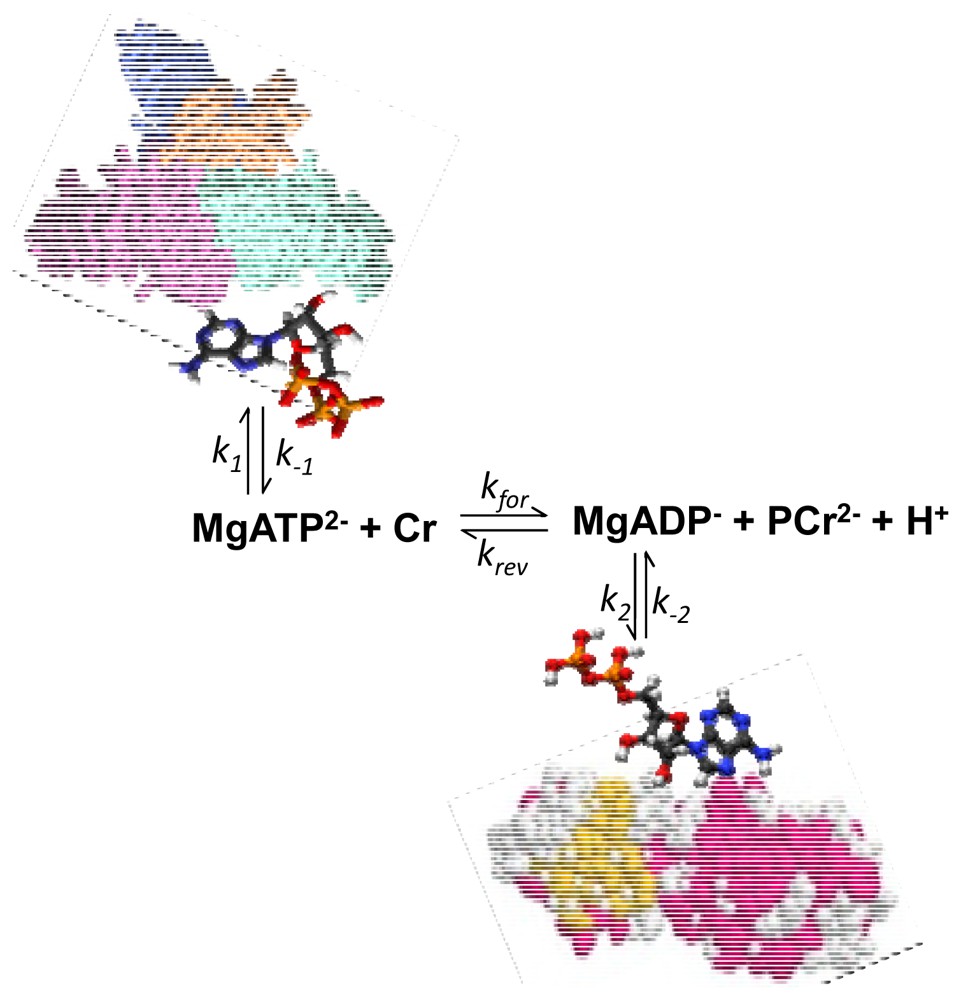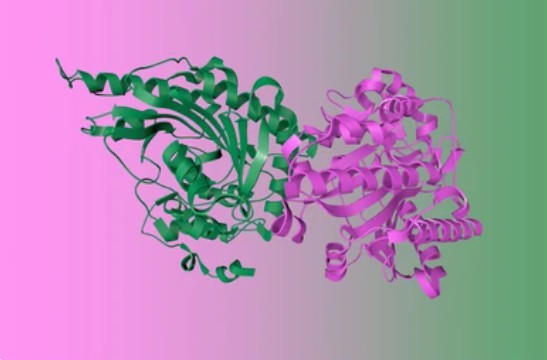Creatin Kinase
Related Symbol Search List
Immunology Background
About Creatin Kinase
Creatine kinase (CK), formerly known as creatine phosphokinase, is an intracellular enzyme present in greatest amounts in skeletal muscle, myocardium, and brain; smaller amounts occur in other visceral tissues. Disruption of cell membranes due to hypoxia or other injury releases CK from the cellular cytosol into the systemic circulation. On this basis, elevated serum levels of CK have been used as a sensitive but nonspecific test for myocardial infarction. The poor specificity reflects the ubiquity of CK in many tissues other than the myocardium.
CK is a dimeric molecule composed of two subunits designated M (CKM) and B (CKB). Combinations of these subunits form the isoenzymes CK-MM, CK-MB, and CK-BB. A significant concentration of CK-MB isoenzyme is found almost exclusively in the myocardium, and the appearance of elevated CK-MB levels in serum is highly specific and sensitive for myocardial cell wall injury.
CK catalyses the conversion of creatine and uses adenosine triphosphate (ATP) to create phosphocreatine (PCr) and adenosine diphosphate (ADP). This CK enzyme reaction is reversible and thus ATP can be generated from PCr and ADP.
In tissues and cells that consume ATP rapidly, especially skeletal muscle, but also brain, photoreceptor cells of the retina, hair cells of the inner ear, spermatozoa and smooth muscle, PCr serves as an energy reservoir for the rapid buffering and regeneration of ATP in situ, as well as for intracellular energy transport by the PCr shuttle or circuit. Thus creatine kinase is an important enzyme in such tissues.
Clinically, creatine kinase is assayed in blood tests as a marker of damage of CK-rich tissue such as in myocardial infarction (heart attack), rhabdomyolysis (severe muscle breakdown), muscular dystrophy, autoimmune myositides, and acute kidney injury.
Mechanism of Action of Creatin Kinase
The mechanism of action of creatine kinase involves the conversion of creatine and ATP to creatine phosphate and adenosine diphosphate (ADP). This reaction occurs in the presence of magnesium ions (Mg2+) and is reversible. In the presence of a high energy demand for high-energy phosphorylation, creatine rupture rapidly releases the stored energy to meet the cell's needs. This property of stored energy and rapid release allows creatine rupture to play an important role in excision contraction. When cellular energy demands increase, such as during muscle contraction or nerve cell signaling, creatine phosphate feeds its phosphate group back to ADP, thereby regenerating ATP.
 Fig.1 Illustration of the non-equilibrium state of the creatine kinase reaction in muscle cells due to ATP and ADP binding to the proteins and solid biological structures. Data from Nabuurs et al. (Aliev M, et al., 2011)
Fig.1 Illustration of the non-equilibrium state of the creatine kinase reaction in muscle cells due to ATP and ADP binding to the proteins and solid biological structures. Data from Nabuurs et al. (Aliev M, et al., 2011)
Functions of Creatin Kinase
- Energy Storage and Transfer
Creatine kinase plays a vital role in maintaining cellular energy homeostasis by facilitating the efficient transfer and storage of high-energy phosphate bonds. It ensures a constant supply of ATP, the primary energy currency of cells, during periods of increased energy demand.
- Muscle Contraction
Skeletal muscle contains significant amounts of creatine kinase, which is essential for muscle contraction. The quick replenishment of ATP from phosphocreatine allows muscles to contract repeatedly, providing the necessary energy for physical activities.
- Brain Function
Creatine kinase is also present in the brain, where it contributes to energy metabolism and neurotransmitter synthesis. The enzyme ensures an adequate supply of ATP for neuronal processes, supporting cognitive functions and overall brain health.
- Diagnostic Marker
Creatine kinase is commonly used as a diagnostic marker for various muscle-related disorders, such as muscular dystrophy, myocardial infarction, and rhabdomyolysis. Elevated levels of CK in blood can indicate muscle damage and assist in disease diagnosis.

Available Resources for Creatin Kinase
Understanding the specific function and regulation of creatine disruption can shed light on creatine metabolism, functional regulation of disease, regulatory mechanisms, and the role of creatine kinase in ontogeny and development. At Creative BioMart, we offer a comprehensive range of research tools and services to support studies related to creatin kinase, including recombinant proteins, cell & tissue lysates, protein pre-coupled magnetic beads, and custom assay development. The following creatin kinase are displayed, click to view all related molecules/targets and research reagents. Please feel free to contact us with any questions or requests.
References:
- Aliev M, Guzun R, Karu-Varikmaa M, Kaambre T, Wallimann T, Saks V. Molecular system bioenergics of the heart: experimental studies of metabolic compartmentation and energy fluxes versus computer modeling. Int J Mol Sci. 2011;12(12):9296-9331.
- Aujla RS, Patel R. Creatine Phosphokinase. In: StatPearls. Treasure Island (FL): StatPearls Publishing; October 24, 2022.

